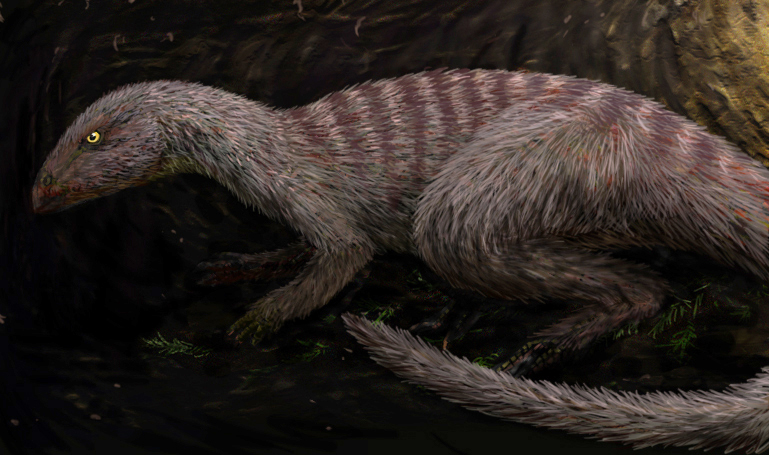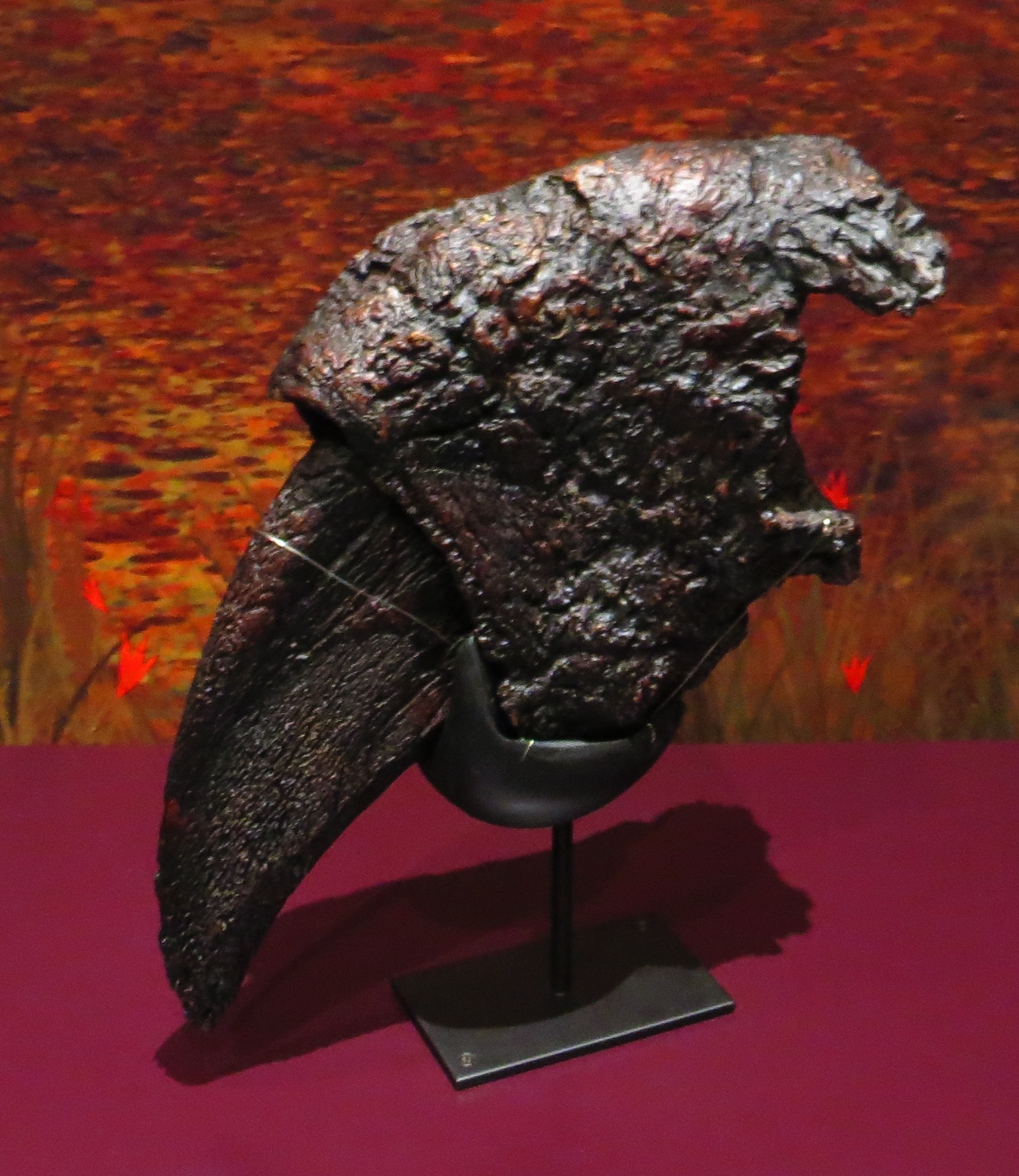|
Albertadromeus
''Albertadromeus'' is an extinct genus of orodromine thescelosaurid dinosaur known from the upper part of the Late Cretaceous Oldman Formation (middle Campanian stage) of Alberta, Canada. It contains a single species, ''Albertadromeus syntarsus''. Etymology The composite term ''Albertadromeus'' is derived from the name of the Canadian province "Alberta", and the Greek word ''dromeus'' (δρομεύς) meaning "runner", a reference to its inferred cursorial nature; thus "runner from Alberta". The specific name, ''syntarsus'' is derived from Greek words "syn" (συν) meaning "together" and "tarsus" (ταρσός) meaning "ankle", hence "together-ankle" a reference to the condition where its distal fibula is fused to its distal tibia. This dinosaur was described and named by Caleb Marshall Brown, David C. Evans, Michael J. Ryan & Anthony P. Russell in 2013 and the type species is ''Albertadromeus syntarsus''. Description The holotype specimen of ''Albertadromeus'' TMP 2009.037 ... [...More Info...] [...Related Items...] OR: [Wikipedia] [Google] [Baidu] |
Orodromine
Orodrominae is a subfamily of thescelosaurid dinosaurs known from the Cretaceous of North America and Asia. Distribution Orodromines were a mostly North American based group with fossils from Canada and United States only. ''Albertadromeus'', as its name suggests, is only from the upper (later) part of the Oldman Formation in the Belly River Group of Alberta, Canada. ''Orodromeus'', the type genus, was widespread through Montana. Its holotype was found at the Egg Mountain in the Two Medicine Formation. '' Oryctodromeus'' fossils were found in the Lima Peaks section of the Blackleaf Formation, also from Montana. ''Zephyrosaurus'', the most widespread genus, lived in southern Montana and northern Wyoming. The locality of its holotype is the Wolf Creek Canyon, which is a sandstone in the Cloverly Formation. Age Orodromines are widespread throughout time, starting in the Aptian and ending in the Campanian. The earliest fossils are of ''Zephyrosaurus'' and are from the Aptian (1 ... [...More Info...] [...Related Items...] OR: [Wikipedia] [Google] [Baidu] |
Oldman Formation
The Oldman Formation is a stratigraphic unit of Late Cretaceous (Campanian stage) age that underlies much of southern Alberta, Canada. It consists primarily of sandstones that were deposited in fluvial channel and floodplain environments. It was named for exposures along the Oldman River between its confluence with the St. Mary River and the city of Lethbridge, and it is known primarily for its dinosaur remains and other fossils.Eberth, D.A. and Hamblin A.P. 1993. Tectonic, stratigraphic, and sedimentologic significance of a regional discontinuity in the upper Judith River Group (Belly River wedge) of southern Alberta, Saskatchewan, and northern Montana. Canadian Journal of Earth Sciences 30: 174-200. Lithology The Oldman Formation is composed primarily of light-colored, fine-grained sandstones. They are upward-fining, lenticular to sheet-like bodies that are yellowish, steep-faced and blocky in outcrop. The formation also includes lesser amounts of siltstone and mudstone.Eb ... [...More Info...] [...Related Items...] OR: [Wikipedia] [Google] [Baidu] |
Thescelosaurus
''Thescelosaurus'' ( ; ancient Greek - (''-'') meaning "godlike", "marvellous", or "wondrous" and (') "lizard") was a genus of small neornithischian dinosaur that appeared at the very end of the Late Cretaceous period in North America. It was a member of the last dinosaurian fauna before the Cretaceous–Paleogene extinction event around 66 million years ago. The preservation and completeness of many of its specimens indicate that it may have preferred to live near streams. This bipedal neornithischian is known from several partial skeletons and skulls that indicate it grew to between 2.5 and 4.0 meters (8.2 to 13.1 ft) in length on average. It had sturdy hind limbs, small wide hands, and a head with an elongate pointed snout. The form of the teeth and jaws suggest a primarily herbivorous animal. This genus of dinosaur is regarded as a specialized neornithischian, traditionally described as a hypsilophodont, but more recently recognized as distinct from '' Hyps ... [...More Info...] [...Related Items...] OR: [Wikipedia] [Google] [Baidu] |
Thescelosaurid
Thescelosauridae is a clade of neornithischians from the Cretaceous of Asia, North America and possibly South America. The group was originally used as a name by Charles M. Sternberg in 1937, but was not formally defined until 2013, where it was used by Brown and colleagues as the group uniting ''Thescelosaurus'' and ''Orodromeus'', based on their phylogenetic results. During a phylogenetic revision of neornithischians by Clint Boyd in 2015, the authorship of Thescelosauridae was given to Brown and colleagues, which meant that the similar name Parksosauridae, informally defined in 2002 by Buchholz, would have had priority over Thescelosauridae. The two clades had slightly different definitions, with Parksosauridae referring to all animals closer to ''Parksosaurus'' than ''Hypsilophodon'', but they contained the same taxa so Boyd used Parksosauridae under the assumption it had priority. However, in formalizing the clade following the regulations of the PhyloCode, Madzia, Boyd, and ... [...More Info...] [...Related Items...] OR: [Wikipedia] [Google] [Baidu] |
Thescelosauridae
Thescelosauridae is a clade of neornithischians from the Cretaceous of Asia, North America and possibly South America. The group was originally used as a name by Charles M. Sternberg in 1937, but was not formally defined until 2013, where it was used by Brown and colleagues as the group uniting ''Thescelosaurus'' and '' Orodromeus'', based on their phylogenetic results. During a phylogenetic revision of neornithischians by Clint Boyd in 2015, the authorship of Thescelosauridae was given to Brown and colleagues, which meant that the similar name Parksosauridae, informally defined in 2002 by Buchholz, would have had priority over Thescelosauridae. The two clades had slightly different definitions, with Parksosauridae referring to all animals closer to '' Parksosaurus'' than ''Hypsilophodon'', but they contained the same taxa so Boyd used Parksosauridae under the assumption it had priority. However, in formalizing the clade following the regulations of the PhyloCode, Madzia, Boyd, a ... [...More Info...] [...Related Items...] OR: [Wikipedia] [Google] [Baidu] |
Zephyrosaurus
''Zephyrosaurus'' (meaning "westward wind lizard") is a genus of orodromine ornithischian dinosaur. It is based on a partial skull and postcranial fragments discovered in the Aptian-Albian-age Lower Cretaceous Cloverly Formation of Carbon County, Montana, USA. New remains are under description, and tracks from Maryland and Virginia, also in the US, have been attributed to animals similar to ''Zephyrosaurus''. It lived approximately 113 mya. Discovery and history Hans-Dieter Sues named his new genus in recognition of the fossil being found in western North America, and Charles R. Schaff, who found the specimen. MCZ 4392, the type specimen, is composed of jaw fragments, the braincase and associated bones, several partial vertebrae, and rib fragments. He found the new genus to represent a previously unknown lineage of hypsilophodont (a taxon now considered not natural), similar in some respects to ''Hypsilophodon''. Because of the fragmentary nature of the type, and lack of a ... [...More Info...] [...Related Items...] OR: [Wikipedia] [Google] [Baidu] |
Oryctodromeus
''Oryctodromeus'' (meaning "digging runner") was a genus of small orodromine thescelosaurid dinosaur. Fossils are known from the Late Cretaceous Blackleaf Formation of southwestern Montana and the Wayan Formation of southeastern Idaho, USA, both of the Cenomanian stage, roughly 95 million years ago. A member of the small, presumably fast-running herbivorous family Thescelosauridae, ''Oryctodromeus'' is the first non-avian dinosaur published that shows evidence of burrowing behavior. Description ''Oryctodromeus'' was originally described as lacking ossified tendons in the tail. However, specimens from the Wayan Formation demonstrate the presence of a thick tendon lattice in the dorsal, sacral, and caudal columns of some specimens; perhaps indicating more flexibility in ossified tendons than has previously been supposed.Krumenacker, L. J., 2010. Chronostratigraphy and paleontology of the mid-Cretaceous Wayan Formation of eastern Idaho, with a description of the first ''O ... [...More Info...] [...Related Items...] OR: [Wikipedia] [Google] [Baidu] |
Occipital Condyle
The occipital condyles are undersurface protuberances of the occipital bone in vertebrates, which function in articulation with the superior facets of the atlas vertebra. The condyles are oval or reniform (kidney-shaped) in shape, and their anterior extremities, directed forward and medialward, are closer together than their posterior, and encroach on the basilar portion of the bone; the posterior extremities extend back to the level of the middle of the foramen magnum. The articular surfaces of the condyles are convex from before backward and from side to side, and look downward and lateralward. To their margins are attached the capsules of the atlanto-occipital joints, and on the medial side of each is a rough impression or tubercle for the alar ligament. At the base of either condyle the bone is tunnelled by a short canal, the hypoglossal canal. Clinical significance Fracture of an occipital condyle may occur in isolation, or as part of a more extended basilar skull fract ... [...More Info...] [...Related Items...] OR: [Wikipedia] [Google] [Baidu] |
Ungual
An ungual (from Latin ''unguis'', i.e. ''nail'') is a highly modified distal toe bone which ends in a hoof, claw, or nail. Elephants and ungulate Ungulates ( ) are members of the diverse clade Ungulata which primarily consists of large mammals with hooves. These include odd-toed ungulates such as horses, rhinoceroses, and tapirs; and even-toed ungulates such as cattle, pigs, giraff ...s have ungual phalanges, as did the sauropods and horned dinosaurs. A claw is a highly modified ungual phalanx. As an adjective, ungual means ''related to nail'', as in ''periungual'' (around the nail). References External links Mammal anatomy {{animal-anatomy-stub ... [...More Info...] [...Related Items...] OR: [Wikipedia] [Google] [Baidu] |
Foramen
In anatomy and osteology, a foramen (; in Merriam-Webster Online Dictionary '. plural foramina, or foramens ) is an open hole that is present in extant or extinct s. Foramina inside the body of animals typically allow nerves, arteries, [...More Info...] [...Related Items...] OR: [Wikipedia] [Google] [Baidu] |
Cnemial Crest
The cnemial crest is a crestlike prominence located at the front side of the head of the tibiotarsus or tibia in the legs of many mammals and reptiles (including birds and other dinosaurs). The main extensor muscle of the thigh In human anatomy, the thigh is the area between the hip ( pelvis) and the knee. Anatomically, it is part of the lower limb. The single bone in the thigh is called the femur. This bone is very thick and strong (due to the high proportion of ... is attached to this ridge. References Bird anatomy {{ornithology-stub ... [...More Info...] [...Related Items...] OR: [Wikipedia] [Google] [Baidu] |
Stegoceras
''Stegoceras'' is a genus of pachycephalosaurid (dome-headed) dinosaur that lived in what is now North America during the Late Cretaceous period, about 77.5 to 74 million years ago (mya). The first specimens from Alberta, Canada, were described in 1902, and the type species ''Stegoceras validum'' was based on these remains. The generic name means "horn roof", and the specific name means "strong". Several other species have been placed in the genus over the years, but these have since been moved to other genera or deemed junior synonyms. Currently only ''S. validum'' and ''S. novomexicanum'', named in 2011 from fossils found in New Mexico, remain. The validity of the latter species has also been debated. ''Stegoceras'' was a small, bipedal dinosaur about long, and weighed around . The skull was roughly triangular with a short snout, and had a thick, broad, and relatively smooth dome on the top. The back of the skull had a thick "shelf" over the occiput, and it had a thick rid ... [...More Info...] [...Related Items...] OR: [Wikipedia] [Google] [Baidu] |







